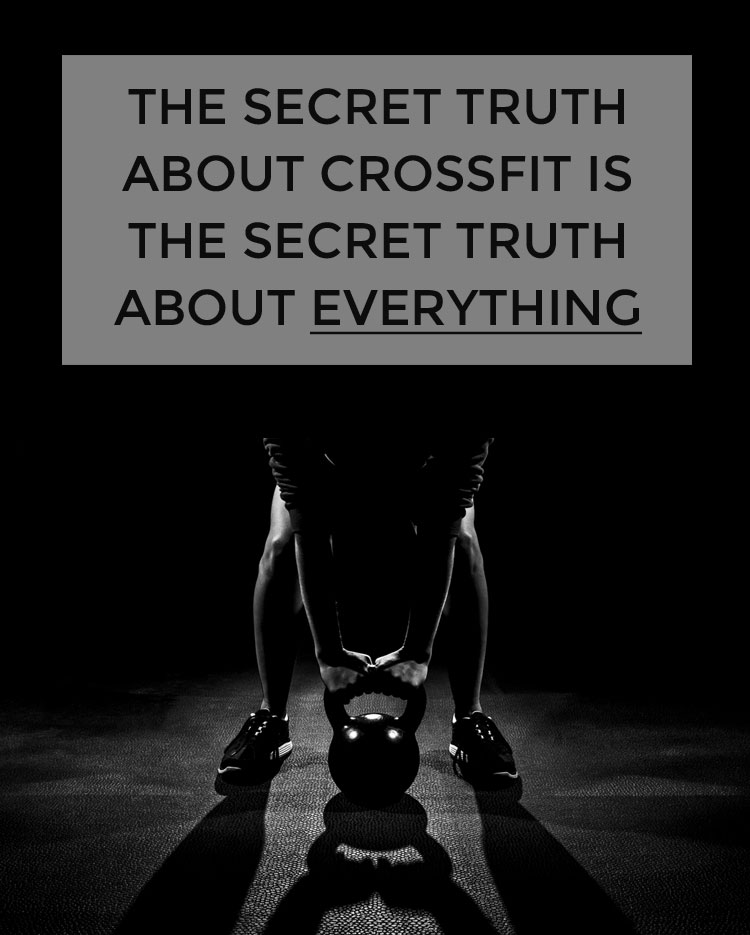
When I first let it be known that I was giving CrossFit a go (just over a year ago now) I got a number of concerned emails from friends. The overriding worry was that my (*cough*) slightly competitive personality, paired with the extremism of CrossFit was a recipe for disaster.
One physio friend said CrossFitters kept her in business and another friend sent through an alarming account of CrossFit induced muscle meltdown. Yet another fretted that I’d become ‘addicted’ to it and wondered how that would work with the pressured life I was living at the time.
I will admit, all the emails gave me pause. And of course, I also appreciated the concerns of my friends.
But in the end:
- I needed to do some kind of strength training to stop my knees getting sore when I ran, and given the gym and I are not friends, the short and sharp class setup of CrossFit looked like it would serve me well.
- A good number of my highly sensible friends did CrossFit. I figured they wouldn’t be doing it if it was an injury-inducing-cult.
So I entered the CrossFit fray, alert … and ok, a tiny bit alarmed.
And what I found there surprised me.
In all the reading I’d done/been sent about CrossFit, I’d heard a lot about:
- vomit inducing workouts;
- psychotic instructors pushing people beyond their limits;
- a slather of horrific injuries caused by sacrificing good technique for speed; and
- the cult-like mentality of CrossFitters.
In short, I’d heard a lot about the extreme elements of CrossFit.
You know what I didn’t read about?
The fact that a CrossFit ‘box’ can be a lovely community (well mine certainly is). A community of like-minded people with diverse goals and reasons for being there, but with one thing in common: the desire to work at their own level of ‘hard’ in order to get fit and strong in a fun, well-supported environment (gee, I should write their ads).
And of course, this secret truth about CrossFit is the secret truth about everything isn’t it?
For every story about an individual taking a ‘movement’ to the extreme (think Paleo, quitting sugar, marathon running, Thermomixing, minimalism, religion), there are thousands upon thousands of people who simply love being part of the communities within those movements. Why?
Because those communities support each individual in taking what works for them from that particular movement … and discarding the bits that don’t.
Off the top of my head I can think of more than 10 separate ‘movements’ that I’m part of in some way right now: IQS, paleo, blogging, writing, triathlon, running, school, CrossFit, low-tox living, minimalism, slow living, small business.
All these ‘movements’ (and the people in them) play their part in shaping how I live my life right now. They all have communities who are happy for me to ‘borrow’ whatever I need (support, advice, philosophies) for my individual circumstances at any given time.
And there are thousands of people, people just like me, whose stories vastly outnumber the extremists in any of these communities. But you don’t hear the stories of people like me because apparently those stories don’t make for very good reading.
Well let me tell you this: CrossFit has been amazing for me. A year and a bit on, I’m the strongest I’ve ever been off the back of two 45 minute sessions a week. I love the way I’m looking. I don’t get knee pain when I run anymore. And a couple of weeks ago, I surprised the heck out of myself when I did my first running race in three years and ran 12 seconds a kilometre faster than my ‘blue sky’ goal for the day.
All because I did something most of us are doing, as a matter of course, each and every day: I used my brain to filter all the information available (including the thoughts of my concerned friends!) and made considered decisions based on my specific needs, desires, lifestyle, goals and personal situation.
Now I reckon that makes for pretty good reading. Don’t you?
Do you manage to participate in some ‘extreme’ movements but in a sensible way? What your secret?

